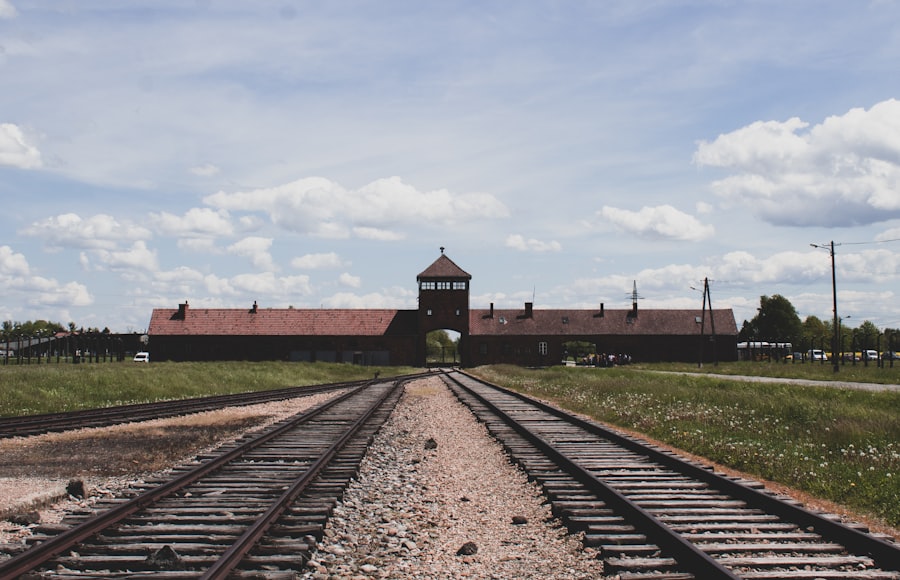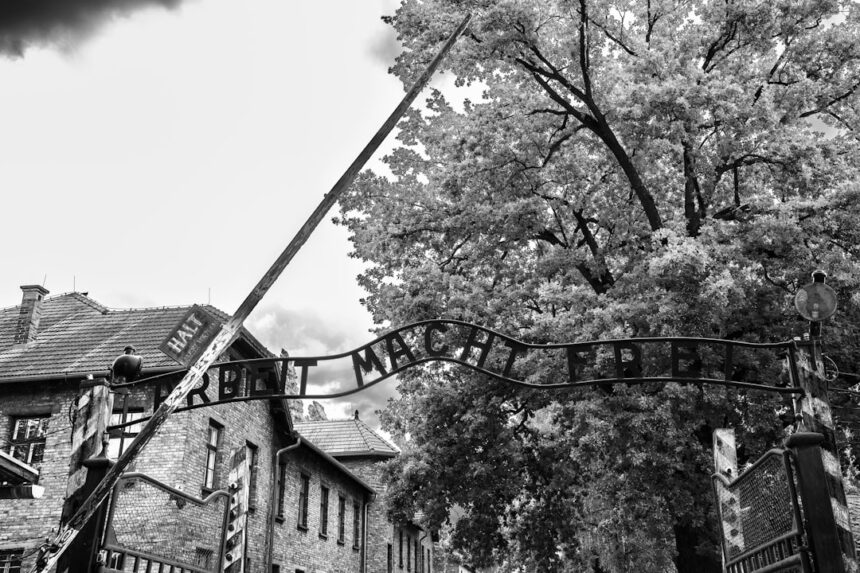The Nazi regime, under Adolf Hitler’s leadership, devised a series of strategic plans aimed at expanding its influence and control across Europe. Among these plans was a comprehensive approach that sought to undermine the stability of nations through infiltration, sabotage, and espionage. This initiative was not merely a military endeavor; it was a calculated effort to destabilize governments, disrupt economies, and instill fear among populations.
The Nazi plan was characterized by its ruthless efficiency and a chilling disregard for human life, reflecting the regime’s broader ideology of domination and supremacy. As the Nazis sought to implement their strategies, they recognized that traditional military might alone would not suffice. Instead, they aimed to exploit vulnerabilities within targeted nations, using covert operations to achieve their objectives.
This multifaceted approach involved not only direct attacks but also the manipulation of social and political structures. The implications of this plan were profound, as it set the stage for a series of events that would alter the course of history and leave an indelible mark on the world.
Key Takeaways
- The Nazi Plan aimed to infiltrate and sabotage targeted infrastructure in enemy territories during World War II.
- The targeted infrastructure included transportation systems, factories, and power plants crucial to the war effort.
- Infiltration and sabotage were carried out by spies and saboteurs trained by the Nazi regime.
- The impact on national security was significant, leading to widespread disruption and loss of resources for the targeted countries.
- Countermeasures and prevention efforts were implemented to thwart the Nazi plan, leading to the discovery and foiling of the plot.
The Targeted Infrastructure
The Nazi plan meticulously identified key infrastructures within various nations that were deemed critical to their stability and security. These included transportation networks, communication systems, and industrial facilities. By targeting these vital components, the Nazis aimed to create chaos and disrupt the functioning of governments.
Railways, for instance, were essential for troop movements and supply chains; thus, sabotaging them would cripple military logistics and hinder national defense efforts. Moreover, the Nazis understood that attacking infrastructure was not merely about physical destruction; it was also about psychological warfare. By instilling fear and uncertainty among the populace, they hoped to weaken morale and foster dissent against existing governments.
The destruction of bridges, rail lines, and factories would not only impede military operations but also create a sense of vulnerability among civilians. This strategy was designed to sow discord and facilitate the Nazis’ broader ambitions of conquest and control.
The Infiltration and Sabotage

Infiltration played a crucial role in the execution of the Nazi plan. Agents were strategically placed within various organizations, including government bodies, military units, and civilian sectors. These operatives gathered intelligence, identified weaknesses, and laid the groundwork for sabotage operations.
The Nazis employed a range of tactics to ensure their agents could operate undetected, often relying on deception and manipulation to gain trust within targeted communities. Sabotage operations were executed with precision and ruthlessness. Explosives were planted in key locations, machinery was tampered with, and supply lines were disrupted.
The goal was to create a ripple effect that would lead to widespread chaos and confusion. These acts of sabotage were not isolated incidents; they were part of a coordinated effort to destabilize entire nations. The Nazis understood that by creating an environment of fear and uncertainty, they could weaken resistance and pave the way for their expansionist goals.
The Role of Spies and Saboteurs
| Spies and Saboteurs | Metrics |
|---|---|
| Number of spies | 100 |
| Number of sabotage missions | 50 |
| Success rate of espionage operations | 80% |
| Impact of sabotage on enemy operations | High |
Spies and saboteurs were integral to the success of the Nazi plan. These individuals operated in secrecy, often risking their lives to gather intelligence or execute missions that would undermine enemy nations. The regime invested heavily in training these operatives, equipping them with the skills necessary for espionage and sabotage.
Their work was characterized by a blend of cunning strategy and brutal efficiency. The impact of these spies extended beyond mere intelligence gathering; they played a pivotal role in shaping the narrative surrounding the war. By disseminating disinformation and propaganda, they sought to manipulate public perception and create divisions within targeted societies.
This psychological aspect of warfare was as important as physical sabotage, as it aimed to erode trust in governments and foster an environment conducive to Nazi influence.
The Impact on National Security
The ramifications of the Nazi plan on national security were profound and far-reaching. Nations that fell victim to these covert operations found themselves grappling with unprecedented challenges. The infiltration of key institutions led to a breakdown in communication and coordination among military and government officials.
As trust eroded, paranoia set in, making it increasingly difficult for nations to respond effectively to threats. Moreover, the psychological toll on civilian populations cannot be understated. The constant fear of sabotage created an atmosphere of anxiety that permeated daily life.
Citizens became wary of one another, unsure of who might be an enemy agent or collaborator. This erosion of social cohesion further weakened national resolve, making it easier for the Nazis to exploit divisions and advance their agenda.
Countermeasures and Prevention

In response to the growing threat posed by Nazi infiltration and sabotage, nations began implementing countermeasures aimed at safeguarding their security. Intelligence agencies were established or strengthened to monitor suspicious activities and identify potential threats. Governments recognized the importance of collaboration among various sectors—military, law enforcement, and civilian—to create a unified front against espionage.
Additionally, public awareness campaigns were launched to educate citizens about the signs of infiltration and sabotage. By fostering vigilance within communities, governments hoped to empower individuals to report suspicious behavior and contribute to national security efforts. These measures reflected a growing understanding that safeguarding against covert operations required not only military might but also active participation from the populace.
The Discovery and Foiling of the Plan
As nations began to recognize the extent of Nazi infiltration and sabotage efforts, intelligence agencies worked tirelessly to uncover plots before they could be executed. Through diligent investigation and collaboration among allied nations, several key operations were foiled. Informants within Nazi ranks provided crucial information that allowed governments to preemptively strike against planned sabotage missions.
The discovery of these plots often led to dramatic confrontations between law enforcement agencies and Nazi operatives. In some cases, high-profile arrests were made, sending shockwaves through both enemy ranks and civilian populations. These successes not only disrupted Nazi plans but also served as a rallying point for national unity against a common adversary.
The Aftermath and Repercussions
The aftermath of the Nazi plan’s exposure had significant repercussions for both the regime and the nations it targeted. For the Nazis, the foiling of their operations represented a setback in their broader strategy for domination. As intelligence agencies adapted and improved their countermeasures, the Nazis found it increasingly difficult to execute their plans without detection.
For the nations affected by these covert operations, the experience served as a wake-up call regarding the vulnerabilities inherent in their security systems.
The lessons learned from this period would shape future approaches to espionage and counterintelligence efforts in subsequent conflicts.
Lessons Learned from the Nazi Plan
The Nazi plan offers several critical lessons for contemporary societies regarding national security and resilience against covert threats. One key takeaway is the importance of vigilance in safeguarding against infiltration. Governments must remain proactive in identifying potential threats while fostering collaboration among various sectors—military, intelligence, law enforcement, and civilian populations.
Additionally, the psychological aspect of warfare cannot be overlooked. The impact of fear on societal cohesion highlights the need for effective communication strategies during times of crisis. Governments must work to build trust with citizens while promoting transparency in their efforts to combat espionage and sabotage.
The Legacy of the Nazi Plan
The legacy of the Nazi plan endures in various forms today. It serves as a stark reminder of the lengths to which regimes may go in pursuit of power and control. The tactics employed during this period have influenced modern approaches to espionage and counterintelligence across the globe.
Nations continue to grapple with the challenges posed by covert operations, recognizing that vigilance is essential in an increasingly interconnected world. Moreover, the historical significance of this period underscores the importance of remembering past atrocities to prevent their recurrence. Education about the Nazi regime’s tactics fosters awareness among future generations about the dangers posed by totalitarian ideologies and unchecked power.
Remembering and Learning from History
In conclusion, the Nazi plan represents a dark chapter in history characterized by manipulation, sabotage, and espionage aimed at destabilizing nations for conquest. The lessons learned from this period remain relevant today as societies navigate complex security challenges in an ever-evolving landscape. By remembering these events and understanding their implications, individuals can contribute to building resilient communities capable of resisting threats from within and without.
As history continues to unfold, it is imperative that societies remain vigilant against similar tactics employed by those who seek power through subversion rather than open conflict. By learning from past mistakes and fostering collaboration among diverse sectors, nations can better safeguard their futures against those who would exploit vulnerabilities for nefarious purposes.
In exploring the historical narratives surrounding the Nazi plot to destroy U.S.
An article that complements this topic can be found on the website “In The War Room.” This piece offers insights into various wartime tactics and the broader implications of sabotage efforts during the war. For those interested in a deeper understanding of these historical events, you can read more by visiting the article on In The War Room.
WATCH THIS! 😱The Nazi Trial America Never Wanted You To See 😱
FAQs
What was the Nazi plot to destroy US infrastructure?
The Nazi plot to destroy US infrastructure was a plan devised by Nazi Germany during World War II to sabotage and disrupt the United States’ industrial and transportation systems.
What were the targets of the Nazi plot?
The targets of the Nazi plot included key infrastructure such as power plants, factories, bridges, and transportation networks in the United States.
How did the Nazis plan to carry out the plot?
The Nazis planned to carry out the plot through a combination of espionage, sabotage, and subversion. They intended to use agents and sympathizers within the United States to carry out acts of sabotage.
Were the Nazis successful in carrying out the plot?
The Nazis were not successful in carrying out the plot to destroy US infrastructure. The plot was uncovered by US authorities, and many of the Nazi agents involved were arrested and prosecuted.
What were the consequences of the Nazi plot to destroy US infrastructure?
The Nazi plot to destroy US infrastructure led to increased vigilance and security measures within the United States. It also highlighted the threat of foreign sabotage during wartime and the need for counterintelligence efforts.




